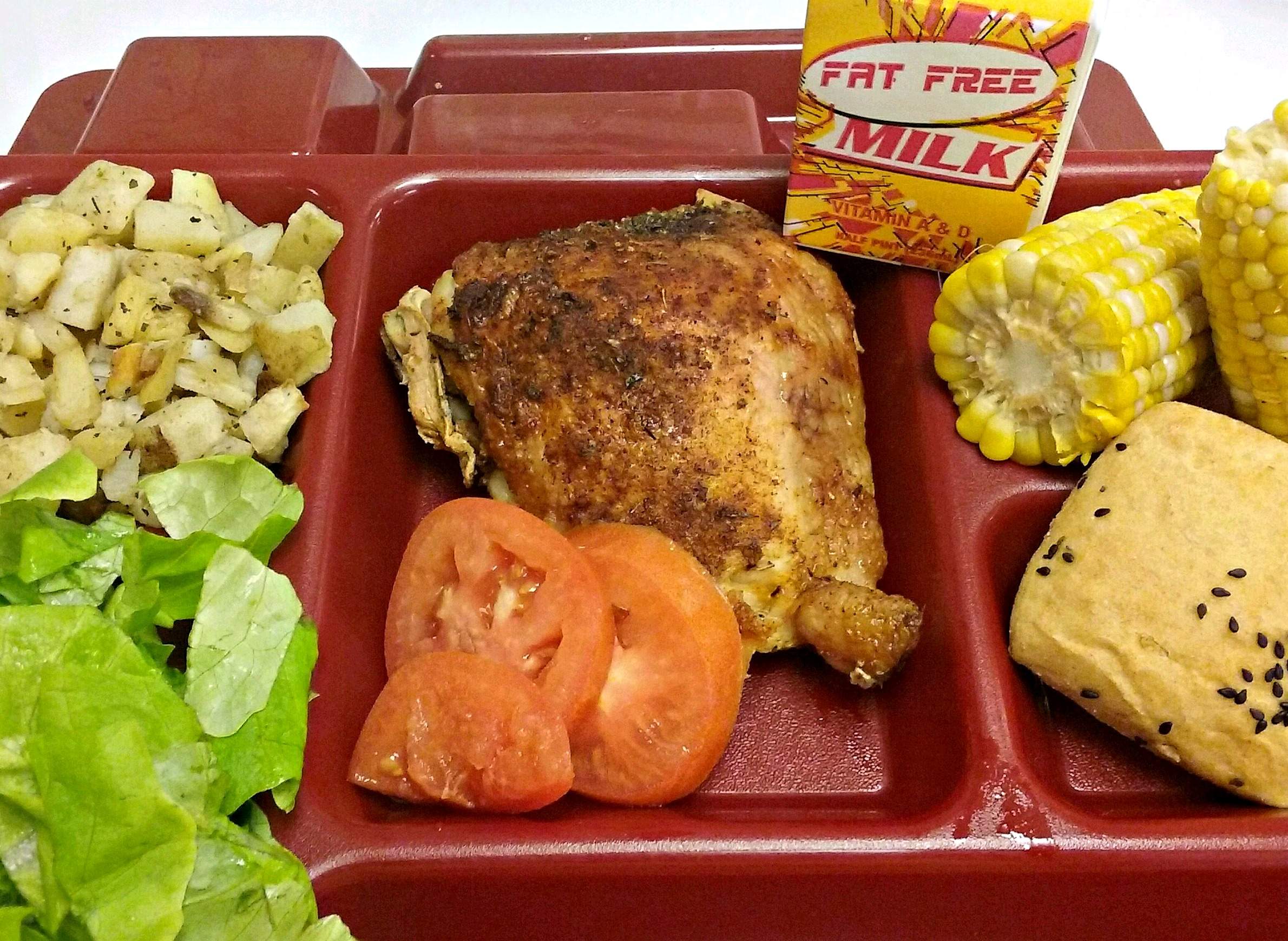
Holmen's farm-to-school program needed to create a system to purchase chicken from itself.

Holmen's farm-to-school program needed to create a system to purchase chicken from itself.
The notion of farm to school has found a busy laboratory in Wisconsin over the past decade. About half of the state's school districts participate in some form of farm-to-school program, which can involve buying locally grown ingredients for school meals, but also includes activities like setting up vegetable gardens, teaching students about local produce and nutrition, and hosting field trips to farms or orchards. These programs together reach more than half a million students in Wisconsin, according to the United States Department of Agriculture's 2015 Farm to School Census.
Every district's farm to school program is different in its scope and details. In most cases, locally sourced ingredients do not completely replace non-local options ordered through food distributors, because of seasonal availability and local variations in what's sold. The costs of locally grown food and logistical challenges of getting needed quantities delivered from farms also can limit the extent of these programs.
Districts that serve local food tend to use different assortments of fruits and vegetables, while a smaller number also serve local eggs, milk and/or meats. Some districts don't buy local ingredients, but have planted gardens or developed other food- or agriculture-related curricula. Some districts want to start farm to school programs, but aren't sure how to begin. Still others want to expand the projects they've already started.
The outcomes of districts with farm to school programs that participated in the USDA census also varied: some reported that buying local increased their food costs, with others noting that it saved money. The paths school districts take to create farm to school programs vary just as much.
"There is no kit," said Vanessa Herald of the Great Lakes Region Farm to School Network and the University of Wisconsin-Madison Center for Integrated Agricultural Systems.
As much as it's caught on, farm to school isn't yet something that's as standardized and professionalized as the conventional approach school food service — purchasing food from a distribution company that may truck in ingredients and processed products from all over the nation, many of which are produced on an industrial scale. Most school districts don't have a staff person with experience in farm to school practices. Moreover, given how many public school districts are hurting financially, it's difficult to imagine administrators budgeting money to hire consultants for any such project. Similarly, existing food service staff will not necessarily having any time to spare to develop programs themselves.
Instead, districts around Wisconsin have looked to assistance from various local food and agriculture advocacy organizations, as well as a statewide coordinator based out of the Department of Agriculture, Trade and Consumer Protection — a position that's been vacant since May 2016.
The journey of school-grown chickens
The farm-to-school programs developed by the School District of Holmen, located just north of La Crosse in western Wisconsin, illustrate the complex questions a district must answer to get its efforts off the ground. Holmen schools partnered with the local Future Farmers of America chapter in 2013 to start up a small student-run chicken-raising operation, said district nutrition director Mike Gasper.
"Finding kids to do it was easy," he said. "They get all excited when they find out they're gonna be raising chickens."
But to come full-circle and actually serve students their home-grown chickens at school lunch, Gasper had to make sure the district complied with state and federal food regulations. He didn't have any previous school-based chicken farms to emulate.
"Finding out those regulations at the time wasn't very easy because there was nothing out there," said Gasper. "We were probably the first district that did something like this."
It turned out that to serve its own chicken for school lunch, the district needed to have the birds processed at a USDA-inspected plant. And to keep transportation costs in check, this plant would need to be within a reasonable distance of Holmen. The district found a plant in Utica, Minnesota, located about 50 miles to the west.
Gasper next had to figure out how to get the chickens to Utica and back. The district wasn’t opposed to driving the live chickens to the plant in a pickup truck, but it didn't have a refrigerated truck to bring back the processed meat. The food distributor the district was already using wouldn't transport the chicken either, for insurance reasons. Ultimately the district found a workaround: joining Fifth Season Cooperative, a Viroqua-based food brokerage.
Essentially, the Holmen school district created a system to purchase chicken from itself. First, it transports live chickens to the plant in Utica for processing and sells them to Fifth Season — students raise about 50 animals at a time.Then a larger food distributor, Reinhardt Foodservice, buys the chicken from Fifth Season and trucks the frozen meat to a freezer facility in La Crosse. When district is ready to serve up some locally raised chicken, it places an order for it through Reinhardt. (Meanwhile, Gasper noted the district continues to acquire from chicken from other sources.)
Holmen's schools also have been sourcing produce and eggs from local farms for about seven years. Gasper said he is particularly proud of the Brussels sprouts his schools serve, though sometimes the prices are too high for the district to buy this vegetable. One point of skepticism farm to school programs face is the argument that kids simply don't like veggies. However, Gasper said programs like the district's school gardens and its year-round hydroponic lettuce project have a persuasive impact on students' eating choices.
"What we find is that when these kids are involved in programs like that, they have a vested interest, and they're way more apt to eat squash, for instance, that they grew," he said.